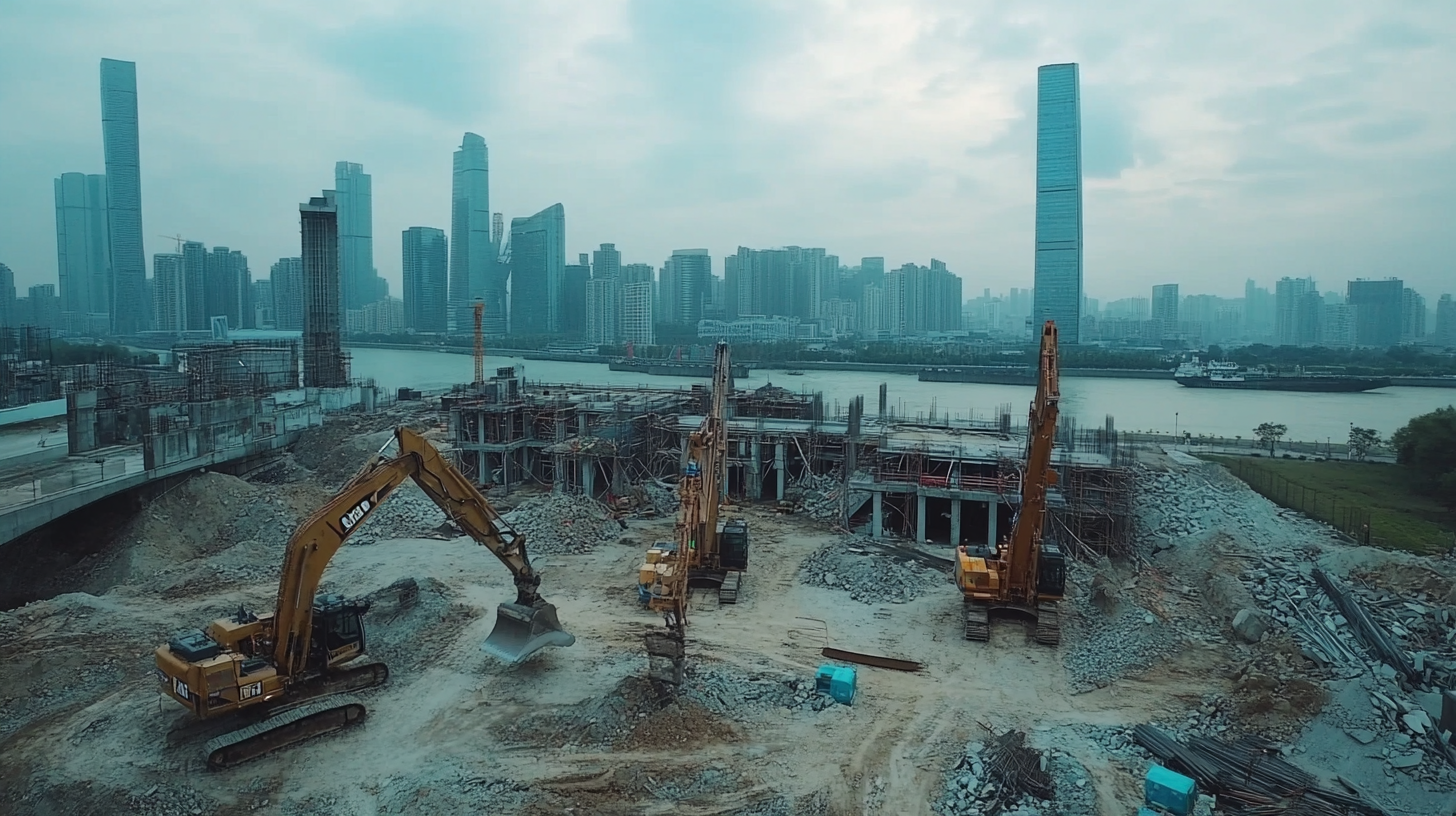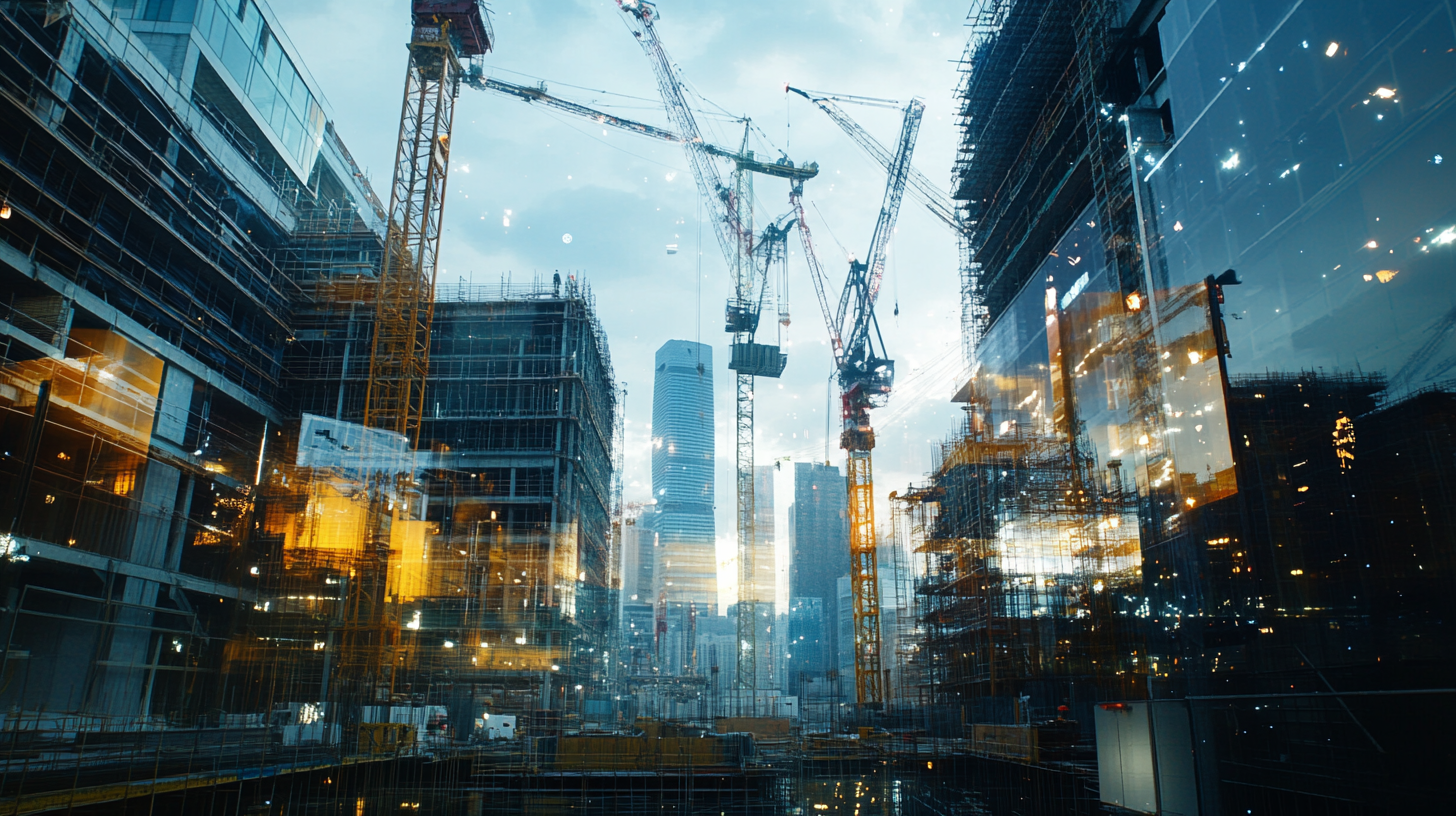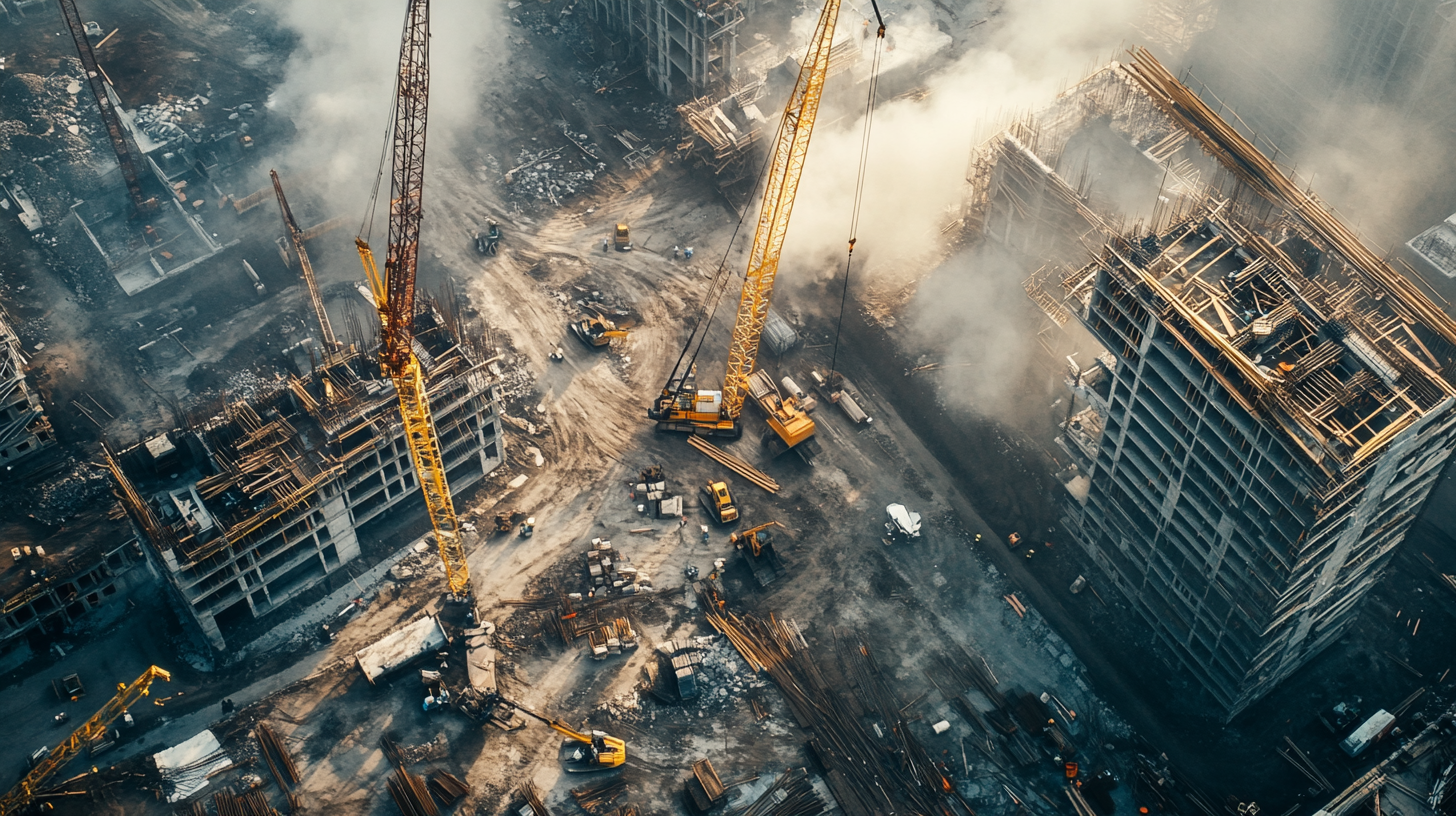Transforming Construction Sites in 2025 Exploring Innovations and Strategies for Global Buyers
As we look towards 2025, the construction industry is poised for a pivotal transformation that promises to reshape construction sites around the world. With the rapid pace of technological advancements and increasing demand for sustainable practices, innovation is no longer a luxury but a necessity for global buyers aiming to remain competitive in this evolving landscape. The construction site of the future will leverage cutting-edge technologies, from robotics to smart materials, to enhance efficiency, safety, and sustainability, creating environments that not only serve practical purposes but also respond to the pressing challenges of our time.
This blog will explore the various innovations and strategies that are set to revolutionize construction sites by 2025. From the integration of artificial intelligence and IoT devices to streamlined project management methodologies, we will delve into the tools and techniques that are transforming how construction projects are planned and executed. For global buyers, understanding these changes is critical, as they offer opportunities to optimize operations, reduce costs, and fulfill compliance requirements in an increasingly complex regulatory environment. Join us as we navigate the future of construction and discover what lies ahead for construction sites worldwide.

Emerging Technologies Reshaping Construction in 2025: A Deep Dive
The construction industry is on the brink of a revolutionary transformation driven by emerging technologies that are reshaping the landscape of construction sites by 2025. According to a report by McKinsey, it is expected that the integration of advanced technologies could yield productivity gains of up to 20%, which can significantly reduce project timelines and costs. Innovations such as Building Information Modeling (BIM), augmented reality (AR), and artificial intelligence (AI) are leading the charge in this transformation, allowing for enhanced collaboration and efficiency on site. Building Information Modeling has become essential, enabling stakeholders to visualize projects in a comprehensive manner before construction begins. Research from the National Institute of Building Sciences indicates that using BIM can reduce project costs by up to 10% while improving safety by identifying potential hazards early in the design phase. Alongside BIM, AR is enhancing onsite training and collaboration, with studies showing a 30% reduction in training time when AR tools are employed. Moreover, artificial intelligence is revolutionizing how projects are managed and executed. According to a study by the World Economic Forum, AI technologies can automate up to 30% of construction tasks, leading to faster completion rates and improved resource allocation. As global buyers embrace these innovations by 2025, the construction sites of the future will not only be more efficient but also markedly safer and environmentally sustainable, aligning with the industry's increasing focus on sustainability goals. The confluence of these technologies marks a significant leap forward in the quest for a more productive and innovative construction industry.

Sustainable Practices: Redefining Construction Site Management
The construction sector is undergoing a significant transformation as we approach 2025, particularly in the realm of sustainable practices. According to a recent report by McKinsey & Company, the global construction industry is expected to grow to $15 trillion by 2030, yet it also accounts for approximately 38% of carbon emissions. This statistic underscores the urgent need for innovative strategies that not only enhance efficiency but also promote environmental responsibility.
In response to these challenges, many construction firms are adopting green building practices, which have shown to reduce resource consumption by up to 30%. Techniques such as modular construction, renewable energy integration, and sustainable materials sourcing are at the forefront of this shift. For instance, the use of recycled materials not only minimizes waste but also decreases material costs by an estimated 20%, making it an attractive option for global buyers looking to manage expenses while adhering to environmental standards.
Furthermore, advancements in technology, including Building Information Modeling (BIM) and IoT applications, are facilitating smarter construction site management. A report from the World Economic Forum indicates that digitization in construction could lead to a productivity increase of 15% by 2025. These tools enable real-time resource tracking and efficient project management, which are critical in implementing sustainable practices effectively while meeting tight deadlines and budget constraints.
As we look toward 2025, the emphasis on redefining construction site management through sustainable practices is not just a trend but a necessity driven by regulatory pressures and market demands. By embracing these innovations, the construction industry can significantly reduce its environmental footprint while still meeting the growing needs of global buyers.

Smart Materials and Robotics: The Future Workforce on Construction Sites
As we move towards 2025, the construction industry is on the brink of a significant transformation driven by smart materials and robotics. These innovations are not just reshaping the physical aspects of construction sites but also redefining the role of the workforce in an increasingly digitalized environment. Smart materials, embedded with sensors and advanced technologies, are enhancing the sustainability and efficiency of structures. They communicate real-time data regarding environmental conditions and performance metrics, leading to smarter decision-making processes and reduced resource wastage.
Robotics, on the other hand, is introducing a new breed of efficiency on construction sites. Automated machinery is taking over repetitive and hazardous tasks, allowing human workers to focus on more complex and creative aspects of construction. Drones are being utilized for site surveying and monitoring, while robotic arms are handling heavy lifting and precise installations. This shift not only increases safety by minimizing human exposure to dangerous working conditions but also accelerates project timelines, pushing the boundaries of what can be achieved in a shorter timeframe.
The integration of smart materials and robotics means that the future workforce will need to adapt and evolve. Construction professionals will increasingly require training in advanced technologies to effectively collaborate with automated systems. As global buyers invest in these innovations, the emphasis will be on finding skilled workers who can leverage new technologies, ensuring projects are not only completed faster but also with higher quality and sustainability standards. This evolution of the workforce represents a profound change in the construction landscape, paving the way for a more innovative and efficient industry by 2025.

Global Procurement Strategies: Adapting to a Changing Construction Landscape
As the construction industry evolves, global procurement strategies are becoming increasingly vital for stakeholders in the sector. A report from McKinsey highlights that approximately 77% of construction executives recognize the necessity of adopting innovative procurement practices to remain competitive. This has urged companies to embrace a data-driven approach that aligns procurement with the broader goals of project delivery and sustainability.
One significant trend is the integration of technology in procurement processes. According to a report by PwC, 56% of construction firms are looking to invest in digital solutions that streamline procurement and enhance collaboration among suppliers. For global buyers, leveraging platforms that facilitate real-time data exchange significantly reduces time delays and cost overruns, which are estimated to account for approximately 20% of project expenses. Furthermore, adopting Building Information Modeling (BIM) allows for better visualization of project specifications, which ultimately refines procurement decision-making.
In addition to technology, sustainability has emerged as a central theme in construction procurement strategies. The World Economic Forum has reported that sustainable construction practices can reduce costs by 15% and improve overall project quality. Global buyers are increasingly prioritizing suppliers who adhere to green building standards and have a commitment to corporate social responsibility. This shift not only meets regulatory expectations but also aligns with the growing demand from clients and stakeholders for environmentally responsible practices in the construction landscape of 2025.
Enhancing Safety Measures: Innovations for Risk Reduction in Construction
As the construction industry anticipates a transformative shift by 2025, the focus on enhancing safety measures has never been more paramount. According to a report by the Global Construction Alliance, the construction sector accounts for approximately 10% of global GDP while also experiencing one of the highest workplace accident rates, with about 60,000 fatalities annually worldwide. Implementing innovative safety technologies is crucial to mitigate these risks and protect the workforce.
One of the most promising innovations is the integration of smart wearable devices, which can monitor workers' health and environmental conditions in real-time. A study published by the Occupational Safety and Health Administration (OSHA) indicated that using wearables can potentially reduce incidents by up to 30% through proactive monitoring. Moreover, advancements in drone technology are enabling site managers to conduct aerial inspections, identifying hazards before they escalate. The use of drones has been shown to decrease inspection times by 80%, thereby allowing teams to focus on safety protocols rather than merely fulfilling compliance obligations.
Furthermore, artificial intelligence (AI) systems are revolutionizing construction safety management by analyzing vast data sets to predict and prevent accidents. Research from McKinsey & Company suggests that adopting AI-driven predictive analytics could cut incident rates by as much as 20%. By leveraging such innovations, construction companies not only comply with safety regulations but also foster a culture of safety that emphasizes worker well-being and operational efficiency, ultimately leading to safer construction sites for the future.